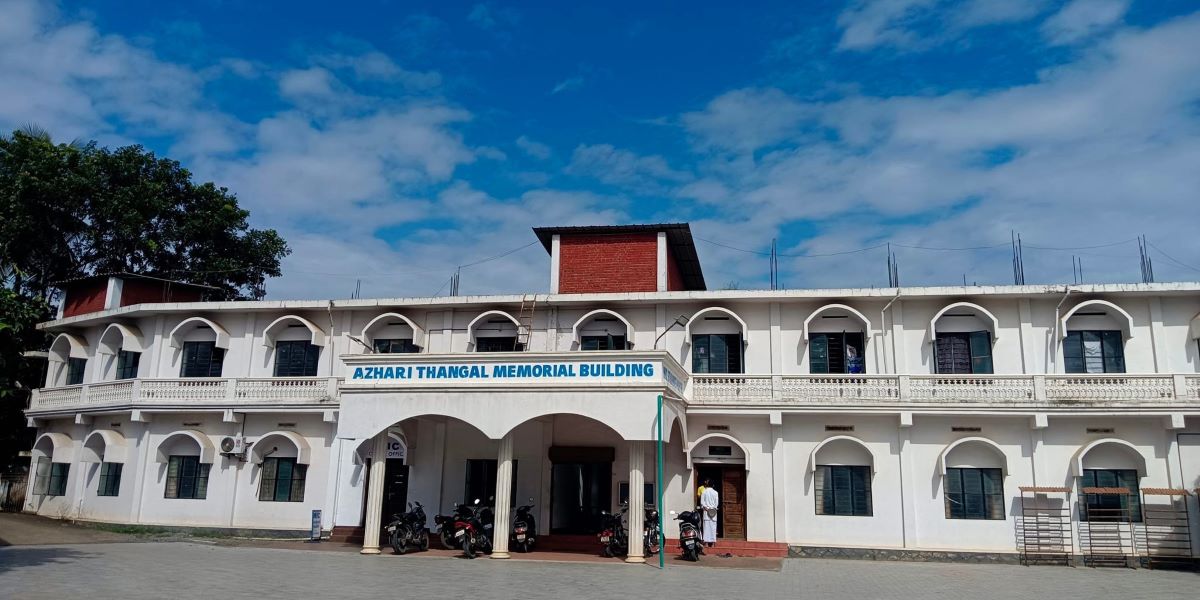Important portions of the Mahabharata and Ramayana too are taught in Sanskrit to students in ASAS, an Islamic institution in Thrissur.

Academy of Sharia and Advanced Studies (ASAS), an Islamic institution in Thrissur, teaches its students Sanskrit, Gita, Upanishads, Ramayana and Mahabharata (asasmic/Facebook)(asasmic/Facebook)
Students in long white robes and white head-dresses in an Islamic institution, unwaveringly reciting ‘slokas’ and ‘mantras’ in Sanskrit under the watchful gaze of their Hindu gurus, is what sets apart a Muslim educational organisation in the Thrissur district of central Kerala.
All conversations between the students and the professor in the class are in Sanskrit.
The objective behind teaching Sanskrit, Upanishads, Puranas, etc., is to inculcate in the students the knowledge and awareness about other religions, said Onampilly Muhammad Faizy, the principal of the Academy of Sharia and Advanced Studies (ASAS) run by Malik Deenar Islamic Complex (MIC).
Important portions of the Bhagavad Gita, Upanishads, Mahabharata, and Ramayana are selectively taught in Sanskrit to the students over a period of eight years after they pass out of Class 10, he said.
The selective teaching of these texts is because the institution is primarily a Sharia college where other languages, like Urdu and English, are also taught besides a degree course in Arts as it is affiliated to Calicut University.
“The academic workload is huge. Therefore, we take in students who can handle it and also maintain strict standards. There is an entrance exam for admitting students,” he said.
Some of the students recently told the media that it was tough to learn Sanskrit, just like Arabic, but by continuously studying and practising, it becomes easier over time.
“It is a tough task initially. Just like Arabic. But if we study it continuously, and repeatedly practice it, just like with Arabic, it becomes easier over a period of time. The regular classes and the tests also help us to learn it,” said one of the students.
While there has been no objection from the parents of the students or anyone else, a major challenge has been finding good faculty to teach Sanskrit, the Bhagavad Gita, Upanishads, etc., properly to the students.
“That is why we were able to start teaching Sanskrit just seven years ago and it is also the reason that it is being taught only at this branch — one of seven,” principal Faizy said.
We have an excellent faculty here who have devised a good curriculum for the students, he noted.
One of the faculty, professor KK Yatheendran, told the media when he was invited to teach there, Faizy “was concerned whether I would have reservations about teaching in an Arabic institution as I was a Hindu”.
“I said there is no Hindu or Muslim issue here. I am coming there ready to teach. So, I have no such reservations,” he told the media.
Dr Ramesh, who also teaches Sanskrit at MIC ASAS, said that the students there have never heard of Sanskrit before coming there.
The other faculty members are Dr CM Neelakandan — retired professor of Sanskrit Literature from the Sree Sankaracharya University of Sanskrit — and Dr Shamseer PC — assistant professor, department of Sanskrit, Kerala University — according to the Facebook page of MIC ASAS.
At a time when political parties in Kerala are at loggerheads over the alleged saffronisation of higher education institutions or them becoming centres of communism, this Islamic institution is setting an example by teaching its students Sanskrit and the Bhagavad Gita along with Arabic and the Quran.
Hafiz Aboobacker, one of the coordinators at the institute, told a media channel that it was important to learn about Islam, but knowledge about other religions was also important and that is also a reason for including Sanskrit in the syllabus.
“It would help students to learn about and understand another religion through their history and Puranas. It would also help to sync our religious views with that of others. It would help to create a new beginning for a new India. That is the goal behind including Sanskrit in the syllabus,” according to him.
(Disclaimer: Only the headline, subheads, and intro of this report along with the photos may have been reworked by South First. The rest of the content is from a syndicated feed)

Apr 27, 2024

Apr 27, 2024

Apr 27, 2024

Apr 27, 2024

Apr 27, 2024

Apr 27, 2024